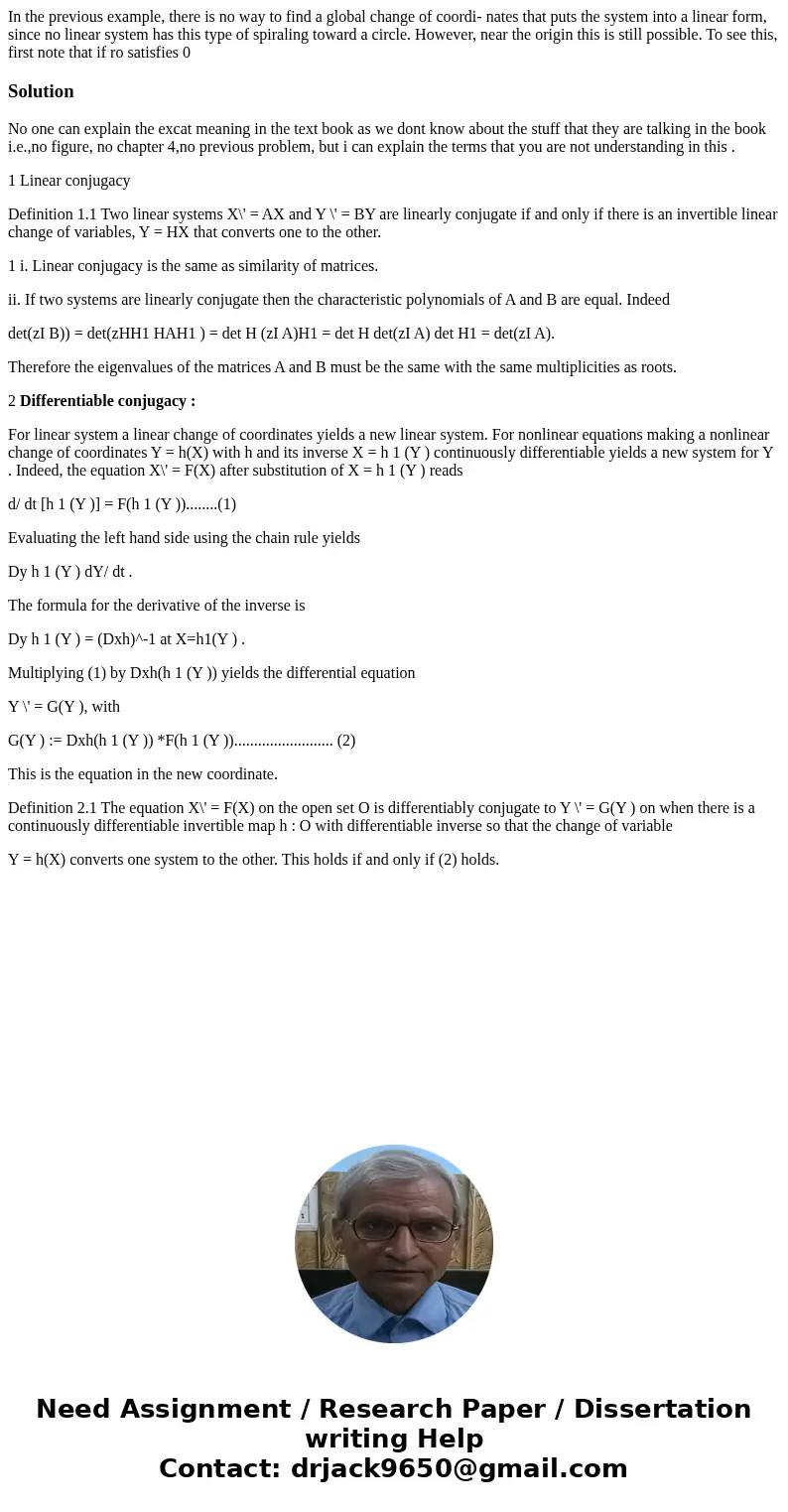In the previous example there is no way to find a global cha
Solution
No one can explain the excat meaning in the text book as we dont know about the stuff that they are talking in the book i.e.,no figure, no chapter 4,no previous problem, but i can explain the terms that you are not understanding in this .
1 Linear conjugacy
Definition 1.1 Two linear systems X\' = AX and Y \' = BY are linearly conjugate if and only if there is an invertible linear change of variables, Y = HX that converts one to the other.
1 i. Linear conjugacy is the same as similarity of matrices.
ii. If two systems are linearly conjugate then the characteristic polynomials of A and B are equal. Indeed
det(zI B)) = det(zHH1 HAH1 ) = det H (zI A)H1 = det H det(zI A) det H1 = det(zI A).
Therefore the eigenvalues of the matrices A and B must be the same with the same multiplicities as roots.
2 Differentiable conjugacy :
For linear system a linear change of coordinates yields a new linear system. For nonlinear equations making a nonlinear change of coordinates Y = h(X) with h and its inverse X = h 1 (Y ) continuously differentiable yields a new system for Y . Indeed, the equation X\' = F(X) after substitution of X = h 1 (Y ) reads
d/ dt [h 1 (Y )] = F(h 1 (Y ))........(1)
Evaluating the left hand side using the chain rule yields
Dy h 1 (Y ) dY/ dt .
The formula for the derivative of the inverse is
Dy h 1 (Y ) = (Dxh)^-1 at X=h1(Y ) .
Multiplying (1) by Dxh(h 1 (Y )) yields the differential equation
Y \' = G(Y ), with
G(Y ) := Dxh(h 1 (Y )) *F(h 1 (Y ))......................... (2)
This is the equation in the new coordinate.
Definition 2.1 The equation X\' = F(X) on the open set O is differentiably conjugate to Y \' = G(Y ) on when there is a continuously differentiable invertible map h : O with differentiable inverse so that the change of variable
Y = h(X) converts one system to the other. This holds if and only if (2) holds.

 Homework Sourse
Homework Sourse